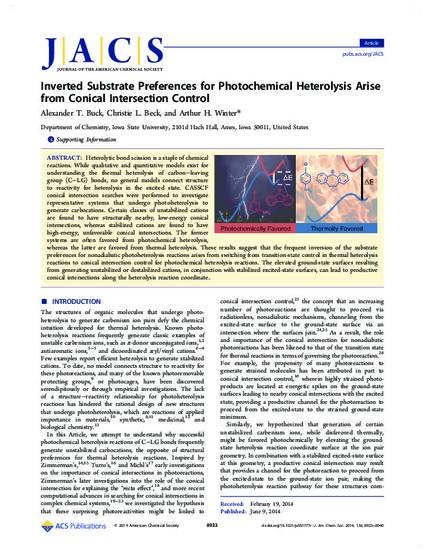
Heterolytic bond scission is a staple of chemical reactions. While qualitative and quantitative models exist for understanding the thermal heterolysis of carbon–leaving group (C–LG) bonds, no general models connect structure to reactivity for heterolysis in the excited state. CASSCF conical intersection searches were performed to investigate representative systems that undergo photoheterolysis to generate carbocations. Certain classes of unstabilized cations are found to have structurally nearby, low-energy conical intersections, whereas stabilized cations are found to have high-energy, unfavorable conical intersections. The former systems are often favored from photochemical heterolysis, whereas the latter are favored from thermal heterolysis. These results suggest that the frequent inversion of the substrate preferences for nonadiabatic photoheterolysis reactions arises from switching from transition-state control in thermal heterolysis reactions to conical intersection control for photochemical heterolysis reactions. The elevated ground-state surfaces resulting from generating unstabilized or destabilized cations, in conjunction with stabilized excited-state surfaces, can lead to productive conical intersections along the heterolysis reaction coordinate.
Available at: http://works.bepress.com/arthur_winter/3/

Reprinted (adapted) with permission from J. Am. Chem. Soc., 2014, 136 (25), pp 8933–8940. Copyright 2014 American Chemical Society.